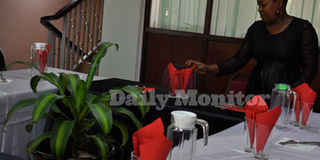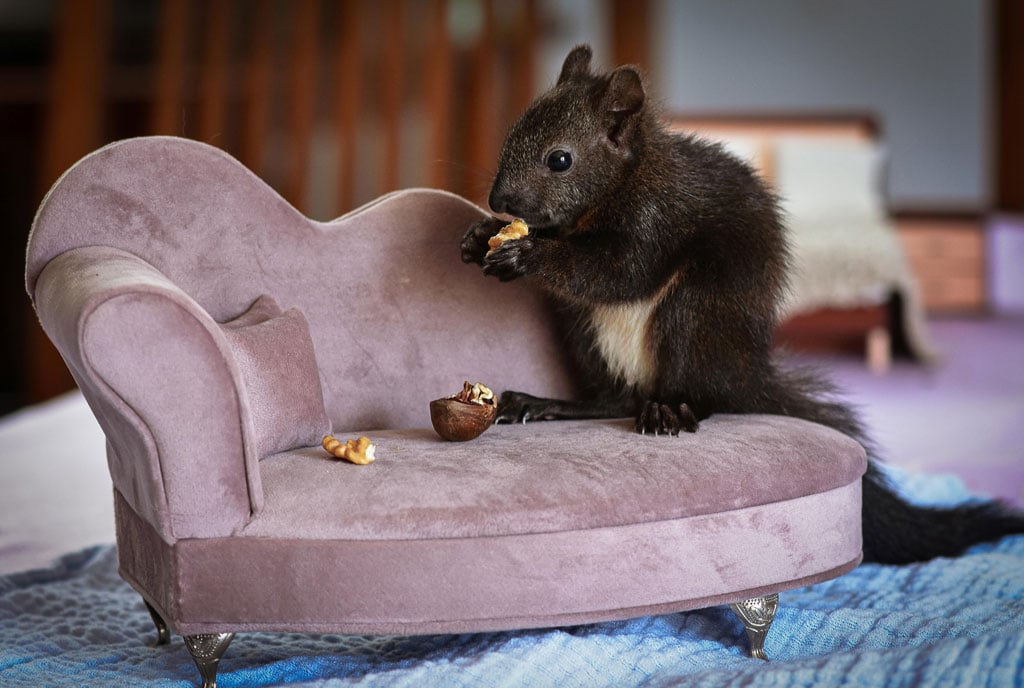Prime
Fine dining this Easter

Fine dining is all about planning and etiquette. You do not need to go out of your way to make this happen, all you need is to use the utensils in your cupboard but in a different way. Photo by Edgar R Batte
What you need to know:
The Easter holiday is one of the longest and if you are not creative, it is easy to run out of ideas. However, if you are planning on hosting people during this holiday, Gillian Nantume writes about how you can achieve this
Having luncheon or diner in a formal setting at home is something a few people do.
At most, if there is a dining table, there will be only placemats which have forks on them. They believe that fancy dining tables belong to high-end restaurants and hotels.
But why not try something new this Easter?
Instead of only your family at the dining table, why not spruce it up and invite some friends as well?
And to make this special, instead of the usual food setting, you can spice up your dining room this Easter in different ways.
Set the stage
You will want to make sure that your home is scrubbed up and down just to make sure that it is presentable to your guests and your family – if you choose to dine alone. If you have a carpet in the dining room, make sure that it is vacuumed clean the day before. This is mainly for the safety of those guests who are allergic to dust.
The windows, ceiling, and light bulbs or chandeliers, should be cleaned as well. To add a bit of freshness to the room, discard the synthetic flowers and instead, go for freshly picked colourful flowers that blend in well with the Easter theme.
The recipe
Usually, in the home setting, we are bombarded with lots of traditional food to make a choice from – matooke, rice, chapatti, chicken, beef, beans and greens, among others.
However, since fine dining is an exotic experience that you do not go through every day, why not be adventurous with your food?
John Adege, a chef, says although there are many recipes on the Internet that one can tryout, cooking continental cuisine needs patience.
“It is bound to be a trial and error kind of thing. Make sure when you start cooking, you have all the time. Preferably, start in the morning since most of these foods can be warmed later and will still taste good.”
If all fails, you can always fall back on the usual traditional foods, after all, what makes fine dining is the setting.
At the same time, as you are planning your recipe, you need to also factor in what kind of drinks you will be giving your guests. Fine dining calls for wine with the food.
Remember, in the old formal diner setting, red wine goes with red meat courses, while white wine goes with chicken and fish. White wine is best served when chilled, red wine can be taken at room temperature. Water is also a must on the table, for those who do not drink alcohol. Do not forget to have soft beverages for the children.
Etiquette
Wherever you are coming from before you head to a home where you have been invited for a luncheon or diner, one of the most important things is your attire. Fine dining calls for formal dressing. Do not ruin your host’s meal by appearing in jeans and t-shirt.
Juliana Mugerwa, executive director, Table Affairs, a firm that sells fine dining tableware at Acacia Place, says a guest should join everyone standing around the table and wait for the host to invite everyone to sit.
“If it is a very formal setting. When you sit down, do not immediately reach for the napkin and place it on your lap. There are servers who are supposed to do that.”
Not many homes have servers so you might have to unfold the napkin yourself. However, even if the table is laden with drinks do not serve yourself. Wait for the host to serve you.
The food will not be put on the table immediately. If you are in a restaurant, you will have to place an order, but if you are in a home, then you will all be eating the same meal. There will have to be a starter, though; usually soup and bread.
“You should handle the cutlery set on the table from the outside and work your way to the inside,” Mugerwa says, adding, “The soup spoon is always the first outside. When the soup is served, usually in a bowl, scoop the soup away from you, starting from the centre to the furthest edge of the bowl. You start at the edges because the soup there is usually cooler than that in the middle of the bowl.”
Never blow on the soup in the bowl to cool it, and neither should you blow on the soup on your spoon.
As you are eating, try not to lean on the table. Only the wrist of the hand you are using to eat should rest on the table.
While eating
Mugerwa says soup is served with a bread roll. Only butter the section of the bread that you have broken off. The smallest plate on which the bread will sit, should be placed on your left, with the wine glasses on your right. The soup bowl should remain on the table, in front of you.
She adds that during fine dining, try to control your eating speed to match those around you. “If you realise that you are eating too fast, slow down, rest your spoon on the plate in front of you, and engage in conversation with one of your neighbours.”
Additionally, “when conversing, start with the person on your left. After the first course, switch to the person on your right. It is not good to start up a conversation with a person who is far away from you.”
By this time, the drinks are already on the table. If you are not sure of the drink, do not ask for it. If you are in a restaurant, do not choose the most expensive drink on the menu, instead, ask your host to recommend the appropriate drink. They, alone know the budget.
“Better still; first ask for water as you patiently wait for the host to suggest a round of wine. On your table, there will be a set of glasses next to your mat. The bigger glass is for red wine, while the smaller one is for white wine. The smallest glass, positioned closer to you, is the water glass.”
While eating the main course and you would like to take a break, maybe to join in the conversation, rest the fork and knife at the 10.30am angle. If the cutlery drops on the floor, do not pick it up.
“Do not spit food in the napkin and if you would like to excuse yourself from the table, fold the napkin and leave it on the chair, not on the table. Wait until the end of the meal before you can use the toothpicks, and while doing so, cover your mouth with your hand.”
Dessert is served after the meal. Do not ask for it at the same time as you are getting the main course.
Choosing the theme
Sarah Namuwaya, a florist with SN Decorations, says there are four Easter colours, red, purple, black, and white.
“Although many people do not follow these colours, to be different, you may choose to have a bit of all of these colours everywhere in the dining room or you can settle for a combination of two. At all costs, do not go with only one colour as your dining setting will end up looking gross.”
Seting the table
While you may not change the size of your table, make sure you have a linen or lace table cloth. As a centrepiece, you may use the fresh flowers picked earlier in the day or a candle stand that can hold many candles – although this will depend on the time of day of the meal.
While placing chairs around the table, space them so that the elbows of the diners do not bump while they are eating. If you decide to have place cards, due to the number of guests, this is the time to place them where each guest is going to sit.
On the table mats, place the forks on the left side while the spoons and knives should be placed on the right side. Since the guest will make their way from the outside to the inside with the cutlery, the dinner fork should be the closest to the plate.
Place the glasses on the right side of the guest, above the table knife. The bread plate should be placed to the left side, above the forks. The cutlery to be used for dessert should be placed above the plate, with the fork closest to the plate.




